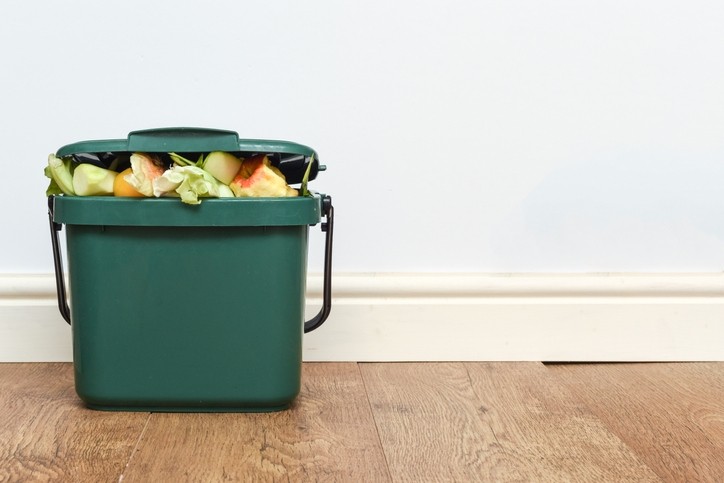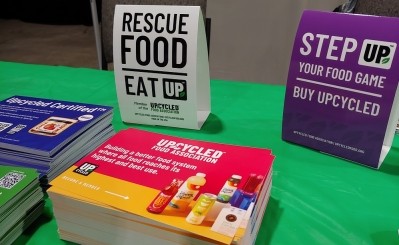FDA, USDA, EPA propose food waste reduction strategies, seek input for improvements

The actions are part of a larger interagency commitment made in 2015 to halve food waste and loss in the US by 2030, and are outlined along with other concrete steps and initiatives in a draft National Strategy for Reducing Food Loss and Waste and Recycling Organics published this month.
The draft also includes other diverse proposals and commitments by the agencies to reduce waste and loss across the food supply chain, such as funding for new packaging innovation to extend product shelf life, investments in emerging technologies to upcycle food ingredients and tech-enabled solutions to more efficiently identify and remove contaminated products from the supply chain.
The extensive strategy also promises social, economic and environmental benefits to help deliver on the Biden-Harris Administration’s National Strategy on Hunger, Nutrition and Health, announced last fall.
Reducing food waste promises environmental, social relief and economic returns
The agencies explain in the draft that reducing food waste and loss is essential because food is “the single most common material found in landfills, comprising 24% of municipal solid waste in landfills and 61% of methane generated by landfilled food waste is not captured by landfill gas collection systems,” and therefore is released into the atmosphere – contributing to climate change, air pollution and other environmental threats.
“Preventing food loss and waste where possible, and recycling organic waste, can substantially reduce environmental impacts,” according to the draft.
The three agencies add that the strategies outlined in the report “will also provide social and economic benefits which can also help address the needs of underserved communities,” such as through increased food access for food-insecure Americans and increased recovery and donation of nutritious food through the emergency food system.
From an industry business perspective, the agencies say the strategies outlined in the draft can increase supply chain resiliency and deliver financial savings.
“Opportunities to reduce food loss at the production and distribution stages of the food supply chain can lead to greater economic returns for producers, manufacturers and distributors. By some estimates, food loss and waste and surplus food was valued at roughly 2% of US gross domestic product – or $444bn – in 2021,” the agencies add in the draft National Strategy.
Agencies clarify food donation guidance, offer incentives and infrastructure support
Among the diverse initiatives that FDA, USDA and EPA outline in the draft national strategy are several that would make it easier for stakeholders to redirect would-be lost or wasted food to those in need.
For example, USDA commits to invest $15m through the National Institute for Food and Agriculture in American Rescue Plan Act funding in the Community Food Projects Competitive Grants Program to connect food producers with food recovery organizations.
USDA also promises in the draft national strategy to expand food donation infrastructure and to support research, education and extension projects that improve and innovate food donation. For example, grants for cold storage infrastructure that would help extend shelf life.
It also commits to clarifying guidance on food safety for food donations, including for eligible meat and poultry products to nonprofit organizations, and to provide outreach about tax credits for food donations and liability protects under the Bill Emerson Good Samaritan Food Donation Act.
FDA, likewise, commits to encouraging “uniform adoption of food donation practices updated in the Food Code, which seeks to ensure food is unadulterated and “honestly presented when offered to the consumer.”
EPA commits to refine and expand its Excess Food Opportunities Map, which “provides information on potential sources of excess food as well as potential infrastructure to help businesses, organizations and governments make better use of food by ensuring it goes to feed people or recycling it,” according to the draft.
Initiatives to encourage upcycling, innovative shelf-life extension solutions
The national strategy also includes initiatives that offer new business opportunities for stakeholders across the value chain, including through support for upcycling ingredients or byproducts that would be wasted to create new foods for human consumption.
For example, USDA commits to investing in emerging technologies through the Small Business Innovation Research program, the Small Business Technology Transfer program and other programs “to improve supply chain resiliency, including food waste reduction and utilization.”
It also says it will continue to invest in “innovative manufacturing technologies” that monitor product quality, food packing materials and shelf-life extension systems as well as potential packaging materials from biobased or renewable sourced polymers using novel physical processes and chemical modification to reduce waste or reliance on fossil-fuel-based packaging.
Agencies seek feedback
While extensive, the list of initiatives in the draft national strategy are far from exhaustive and the agencies are seeking feedback about how else it might help reduce food waste and loss or support ongoing efforts.
For the next 30 days, the public can comment on the draft (docket ID No. EPA-HQ-OLEM-2022-0415). The agencies specifically say they would like to know:
- “What actions could help the US meet its goals that are not reflected in the draft?
- What type of research should be funded?” and,
- “What actions would result in more equitable outcomes for underserved and/pr food insecure communities?”

![[On-demand event] Sustainable innovation: How CPG brands can redesign packaging with compostability in mind](/var/wrbm_gb_food_pharma/storage/images/_aliases/wrbm_medium/publications/food-beverage-nutrition/foodnavigator-usa.com/article/2023/11/20/on-demand-event-sustainable-innovation-how-cpg-brands-can-redesign-packaging-with-compostability-in-mind/16938588-1-eng-GB/On-demand-event-Sustainable-innovation-How-CPG-brands-can-redesign-packaging-with-compostability-in-mind.png)














